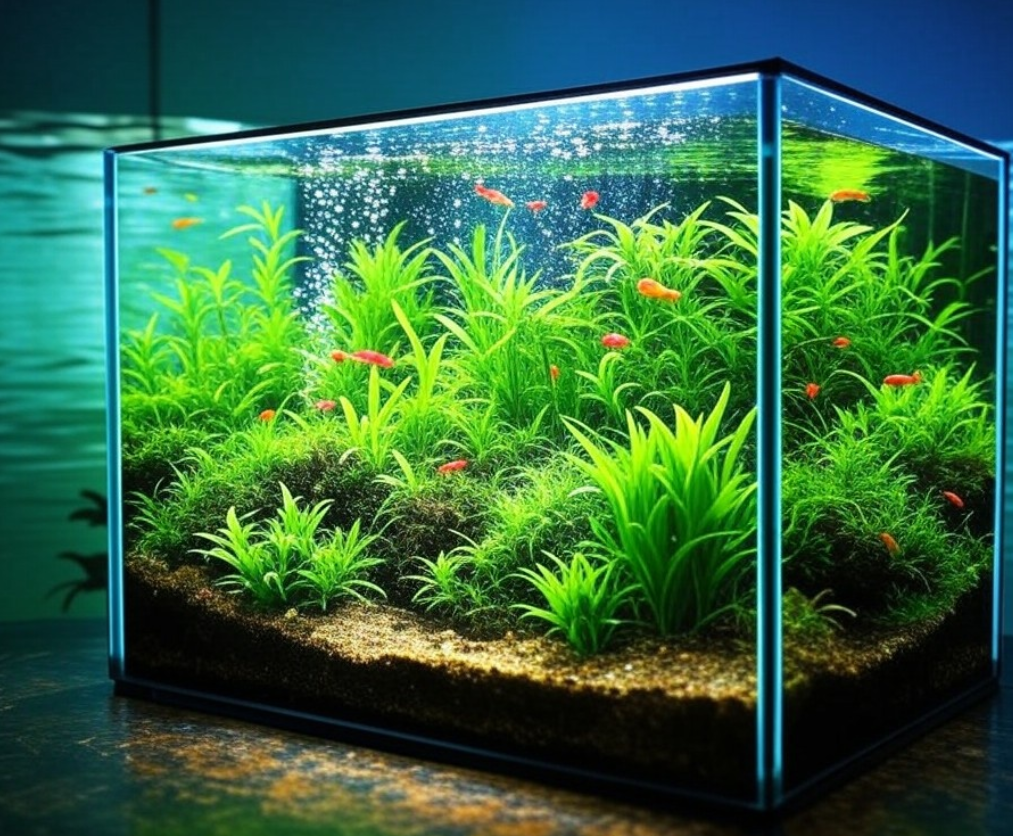Table of Contents
![]()
Introduction to High-Tech Aquariums
A high-tech aquarium represents a pinnacle of aquatic engineering, where nature meets technology to create an environment where plants can thrive spectacularly, and fish can live in conditions mimicking their natural habitats. This setup typically includes CO2 injection systems, high-intensity lighting, and meticulous fertilization schedules.
Benefits of a High-Tech Aquarium
Benefits of such an aquarium include:
- Faster Plant Growth: Plants grow at an accelerated rate due to optimal nutrient and CO2 levels.
- Vibrant Colors: Enhanced lighting conditions make plant colors pop, creating a visually stunning aquascape.
- Demanding Plants: Allows for the cultivation of plants that require high light and nutrients, like certain species of Rotala or Ludwigia.
However, challenges also abound:
- Increased Maintenance: Daily checks on CO2, lighting, and water parameters are necessary.
- Higher Costs: Equipment like CO2 systems and high-quality lights can be expensive.
- Complexity: Requires a good understanding of water chemistry and plant biology.
Setting Up a High-Tech Aquarium
Tank Selection
Choosing the right tank is foundational. Larger volumes (55 gallons or more) offer stability in water parameters. Consider the material; glass tanks are traditional but heavier, while acrylic offers flexibility in shape and weight but can scratch.
Lighting
Lighting in a high-tech setup is not just about brightness but also spectrum. LED lights with customizable spectrums are ideal, allowing you to mimic natural daylight cycles. Understanding PAR (Photosynthetically Active Radiation) helps in adjusting light to plant needs.
CO2 System
A CO2 injection system includes a regulator, diffuser, and often a drop checker for monitoring. Proper CO2 levels (usually around 20-30 ppm) promote plant growth while maintaining fish safety.
Filtration
Effective filtration is crucial due to the increased biological load from fast-growing plants and fish waste. Canister filters or sumps with media for mechanical, biological, and sometimes chemical filtration are recommended.
Substrate
High-tech tanks benefit from nutrient-rich substrates that supply essential nutrients directly to plant roots. Substrates like ADA Amazonia or Fluval Stratum are popular choices.
Water Parameters
In a CO2-injected environment, maintaining stable pH, KH (carbonate hardness), and GH (general hardness) is vital. The CO2 can lower pH, so buffering with KH is necessary to prevent pH swings.
Plant Selection and Maintenance
Plant Choices
Opt for plants that thrive under high light and CO2, such as:
- Foreground: Hemianthus callitrichoides, Glossostigma elatinoides.
- Midground: Rotala macrandra, Ludwigia repens.
- Background: Vallisneria spiralis, Hygrophila polysperma.
Plant Care
Regular pruning, especially for fast growers, ensures light reaches all parts of the tank. Watch for signs of nutrient deficiencies like pale leaves, which can guide fertilizer adjustments.
Fish and Invertebrates
Stocking
Choose species that can tolerate or benefit from the conditions in a high-tech tank. Fish like neon tetras or guppies are good, but consider fish that won’t uproot plants, like corydoras or otocinclus.
Health and Compatibility
High CO2 levels can stress fish if not monitored. Keep an eye out for signs of CO2 toxicity like gasping at the surface or lethargy.
Daily and Weekly Maintenance
Water Changes
Perform weekly water changes (about 20-30%) to manage nutrient levels and prevent algae.
Fertilization
Use a comprehensive fertilization regime like the Estimative Index (EI) for dosing macro and micro nutrients. This method involves adding nutrients at rates higher than needed, with regular water changes to remove excess.
CO2 Management
Daily checks on CO2 levels via a drop checker are essential, along with refilling CO2 canisters when necessary.
Algae Management
Prevent algae with balanced light, CO2, and nutrients. If algae do appear, consider spot treatments or adjusting your maintenance schedule.
Troubleshooting Common Issues
CO2 Issues
Symptoms of CO2 deficiency include slow plant growth, while excess can harm fish. Adjustments to CO2 flow or checking for leaks might be necessary.
Plant Growth Problems
If plants aren’t thriving, assess light, CO2, and nutrient levels. Yellowing leaves might indicate a deficiency in iron or other micro-nutrients.
Water Quality
Sudden changes in parameters can lead to plant or fish stress. Regular testing and stability are key.
Advanced Techniques and Upgrades
Automation
Automate processes like lighting schedules, CO2 injection, and nutrient dosing with timers and controllers for consistent care.
Aquascaping
High-tech setups allow for intricate aquascaping due to the control over plant growth, enabling complex, artful designs.
Upgrading Equipment
As your setup evolves, upgrading to more efficient lighting or a larger CO2 system can enhance plant growth and tank stability.
Conclusion
Caring for a high-tech aquarium is a rewarding endeavor for those willing to commit time and resources. It offers a glimpse into a vibrant underwater world but demands regular attention to detail. For beginners, starting with a simpler setup before advancing to high-tech might be wise to understand the basics of aquarium care.
Share This





Be the first to comment